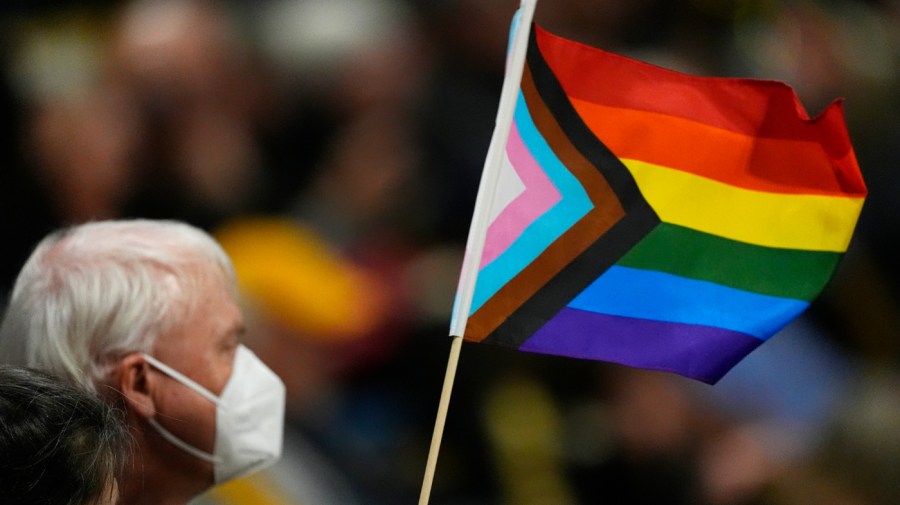
On Jan. 20, the Trump administration issued Executive Order 14168 “From Gender Ideology Extremism and Restoring Biological Truth to the Federal Government.”
The aim of this new rule is to restrict gender and sex to two biological sexes and to assign strict definitions of who is male and who is female. Many of us learned a similar, simple definition in high school biology.
But just like Mendel and his peas don’t fully explain the actual complexity of genetic inheritance, simple definitions for biological sex do not fully capture the human experience.
The first major issue with this new rule is that it narrows sex to two options: male or female. While these two categories are convenient, classification in biology is messy, and there are always exceptions to human-made rules. For example, take the term “intersex.” The old word we don’t use anymore is “hermaphrodite,” and in medical books nowadays, you will see it as “differences in sexual development.”
Through differences in chromosome count, mutations or environmental influences, there is wild variation in sex hormone levels and the body’s ability to respond to them. The result is newborns who don’t fit neatly into “male” or “female” in terms of their gonads or genitals. Oftentimes, doctors will assign the newborn a sex based on their diagnosis. Caster Semenya, the former Olympic runner, is probably the best-known intersex woman.
As intersex children enter their teens, other things like breast tissue, pelvic structure, Adam’s apple, body and facial hair or body fat may develop in ways that don’t always line up with their sex assigned at birth. Even in males or females who are not intersex, we see a wide range of these features. None of them on their own determine someone’s sex.
So, maybe you’re saying, “Sure, but intersex people are just rare cases.” And yes, they are rare. The highest estimates are that as many as 1-2 in every 1,000 births will result in an intersex child.
But even if the real rate were lower, it doesn’t change the fact that these people exist — just as naturally as male and female people do. We can’t ignore whole people just because they don’t fit our made-up rules.
The second major issue with the new executive order is that it defines the sexes as belonging to a sex, at conception, that produces either a large or small “reproductive cell” (eggs or sperm). When a sperm and egg fuse at conception, they become one, single cell. There are no reproductive cells until four to five weeks, and at six weeks, the cells forming the future ovaries or testes both resemble ovaries. Some snarky online personalities have joked that by this definition, everyone in the U.S. is now female by default. Others noted that the new rule could be interpreted to mean that no one has a sex until they reach puberty and actually form sperm or eggs.
The question becomes, how do we determine and verify someone’s sex by this definition? It’s physically impossible at conception, and we know there are rare cases where a child is born and matures intersex. And what about people who never produce sperm or eggs at all? Do they all just sit in sex limbo at the DMV?
There have already been several newsworthy cases of girls and women who were born female, mistakenly accused of being trans, and harassed for having muscles, short hair or a sharp jawline.
This complexity is likely why the Trump administration has tried to use a very specific definition of biological sex that avoids talking about genitals, chromosomes or anything other than “reproductive cells.” But there is no lawyering out a simple definition because of how human biology actually works and all of its exceptions.
To address the “gender” versus “sex” issue — how a person behaves or appears, or traditional roles in society — these are what make up a person’s “gender.” They’re not necessarily hard-coded into our genes.
You can guess where this is headed: Researchers and historians have recorded examples of third genders in societies across the globe and over time. In the U.S., many people are now ditching our traditional definitions of men and women to be their true selves, which is upsetting many who don’t understand.
It’s human nature to want things to fit nicely into boxes and labels. The problem is, when we try to force nature into these perfect boxes, nature defies us.
Executive Order 14168 seeks to specifically reject the existence of transgender and gender non-conforming people. But in so doing, it fails to cut the scientific mustard and has the side effect of harming intersex people and indeed everyone else.
Now, the Trump administration has set its sights on transgender athletes and scientists mentioning anything related to sexual orientation and gender identity in their research. This is also happening at the state level — for example, a teacher in Arizona was placed on leave just for discussing intersex people with students.
Anyone who embraces science, including scientists themselves, should oppose a president dictating who is a man or a woman. Any government that has to suppress science and the existence of intersex people to make their definition of sex succeed never had a solid case referencing science to begin with.
Dane Samilo is the communications chair at Out to Innovate, a professional society and global community of LGBTQ students and professionals in science, technology, engineering and mathematics.












